Documentary : Disaster , Disaster Management
![]()
Great East Japan Disaster : Akiko’s First 30 Days
DC371207![]()
NNNドキュメント‘11 津波にのまれた女将 [TVI]
![]()
![]()
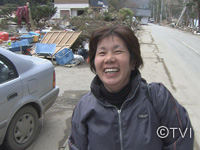
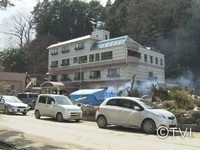
|Length : 24min. |Year : 2012 |
Akiko Iwasaki (age 54) lives by the sea near Kamaishi City in Iwate Prefecture. The inn she owns and operates is hit by the tsunami, destroying the entire first floor. Just then, Ms. Iwasaki was running through the parking lot to escape up the hill but was overcome by the wave. She talks of how she was sucked under like a whirlpool, all went dark and she calmly thought about how she was going to die like this. But then she tried swimming, clambered up to the surface, and was saved by a hairsbreadth.
She opens her ruined inn to 20 plus refugees, supplying her own food stocks and working hard, turning her place into a private evacuation shelter. Next the ruined inn is deemed hazardous for refugee living, and she receives an official order to shut down by the end of March. Akiko Iwasaki, the innkeeper who was sucked under by the tsunami and barely escaped with her life, is now, beyond her will, forced into transience.
Tough It Out – The Survivors of The 2011 Great Sanriku Tsunami –
DC371106![]()
生き抜く、人々 ~南三陸町 鎮魂と復旧の夏~ [MBS]
![]()
![]()
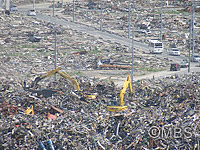
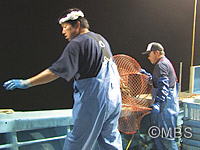
|Length : 30min. |Year : 2011 |
Minami Sanriku is a port town surrounded by the sea and mountains on the Sanriku coast in Miyagi Prefecture. On that fateful day on March 11, the giant tsunami washed away nearly the entire town. Over 550 people died and many are still unaccounted for.
Since the disaster, the highest priority in town has been the construction of temporary housing. The town's head of the construction section has worked nonstop to move the citizens out of evacuation centers like the school gym to temporary quarters of their own, and has moved into
his makeshift municipal office in order to oversee the work. He and his crew are striving to find housing for all of the roughly 1900 families in time for the O-Bon season in August.
In July, fishermen take to the seas once more to catch seasonal octopus. There are others who are considering giving up oyster farming due to the cost of finding a boat and starting up business all over again. In order to even out the differences in age and experience, the fishing cooperative is encouraging the fishermen to work in groups. Many voice loud opposition to this idea and the difficulties of reviving the town's key fishing industries become painfully clear.
After the disaster, out of concern for the future, many citizens expressed a strong desire to move the reconstruction site to higher ground. The survivors of the town organized early on to make this a reality. But with little cooperation from the government due to budget concerns, optimism has turned to resignation and dismay.
Overcoming sadness, the citizens of Minami Sanriku have moved on, one step at a time. But six months after the disaster, they are wrought with exhaustion and stress, and continue to face many problems.
In this special news program, the courage of the people of Minami Sanriku shines through as they struggle to find a home, a place to work, and hang on to their hopes of rebuilding their lives and their town.
The “Miracle” of Kamaishi – The Children Who Survived the Tsunami
DC371105![]()
明日への証 「“釜石の奇跡”の真実」 ~大津波を生き残った子どもたち [IBC]
![]()
![]()
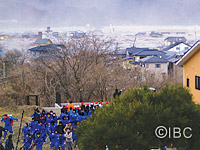
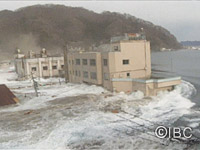
|Length : 30min. |Year : 2011 |
The gigantic earthquake that rocked Japan on March 11, 2011, triggered a devastating tsunami, claiming many precious lives. However, in one area, roughly 600 people evacuated together and lived to tell the tale - the Unosumai District of Kamaishi City, Iwate Prefecture. All students and faculty who evacuated together from a middle school and an elementary school, both right near the ocean, were able to escape the tsunami's deadly clutches. Their story became known nationwide as the "Miracle of Kamaishi."
Though the word "Miracle" is meant to praise the survivors, students and faculty of the middle school feel that it makes their survival sound incidental, and does not adequately describe what happened.
"Our survival is not a miracle." What makes them say so? How, then, were they able to survive? Through their own testimonies, we trace their footsteps on that fateful day, to unveil the true nature of the "Miracle" of Kamaishi.
Town on the Brink : The Struggle for Recovery
DC371104![]()
クローズアップ東北 消えゆく町で 宮城県~石巻・雄勝町 [NHK]
![]()
![]()
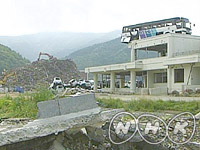
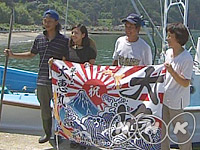
|Length : 25min. |Year : 2011 |
The city of Ishinomaki in northeastern Japan has sustained tremendous damage in the wake of the Great East Japan Earthquake that struck on March 11, 2011. Ogatsu, a town outside the city center, is at risk of disappearing from the map due to slow progress toward recovery. The town used to be the site of scallop and oyster farming but following the disaster, eighty percent of the population that once exceeded 4,000 left, as the residents were no longer able to support themselves. Results of a survey showed that more than half of residents who responded wish to return to Ogatsu. To realize this, construction of public facilities such as schools and job opportunities are crucial, particularly for young people, who would play an important role in recovery efforts. However, the local government has yet to propose a recovery plan for Ogatsu. This program follows residents of Ogatsu for three months from July 2011. Tetsuichi Yamashita, who used to run a variety store in a village, shared a temporary shelter with the few remaining people. They stuck together for a while despite the inconveniences, but one by one they left the shelter due to reasons such as losing a day labor job. Yamashita watched them go, saying he feels the tsunami has taken away their friendships too. With Yamashita as the last person to leave the shelter, another village was gone. Meanwhile, local fisherman Hisao Yamato has been devoting effort to resuming fishing with his only son. Yamato also set up an organization to help residents rebuild the town on their own. "If only one person had remained, we couldn't have done anything. Lots of people stayed and supported each other. That gave us the energy." says Yamato. This is the story of people struggling to regain a peaceful life in a town on the brink.
Tsunami Disaster Heartache and Hope Through the Viewfinder – 49 days of Life and Death –
DC371103![]()
津波を撮ったカメラマン [KHB]
![]()
![]()
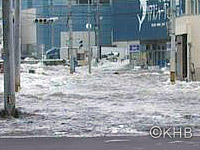
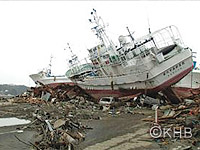
|Length : 24min. |Year : 2011 |
A local news cameraman shoots the huge tsunami engulfing Kesennuma, a city in Miyagi Prefecture and one of the major fishing ports of the Tohoku region. He seeks footing near the port with camera in hand and finger pressed to shutter as he backs his way up a flight of stairs to higher ground. The viewfinder, framed at the residents' eye level, fills with the terrifying sight of gushing black water. As the tsunami starts to recede, the cameraman hears calls for help from all over town. After a moment's hesitation, he sets his camera down and walks towards the voices.
The program follows the work of the news cameraman living in the fishing port devastated by the monstrous wave and, through his camera, presents the fury of the tsunami and the daily lives of the people in the afflicted area.















